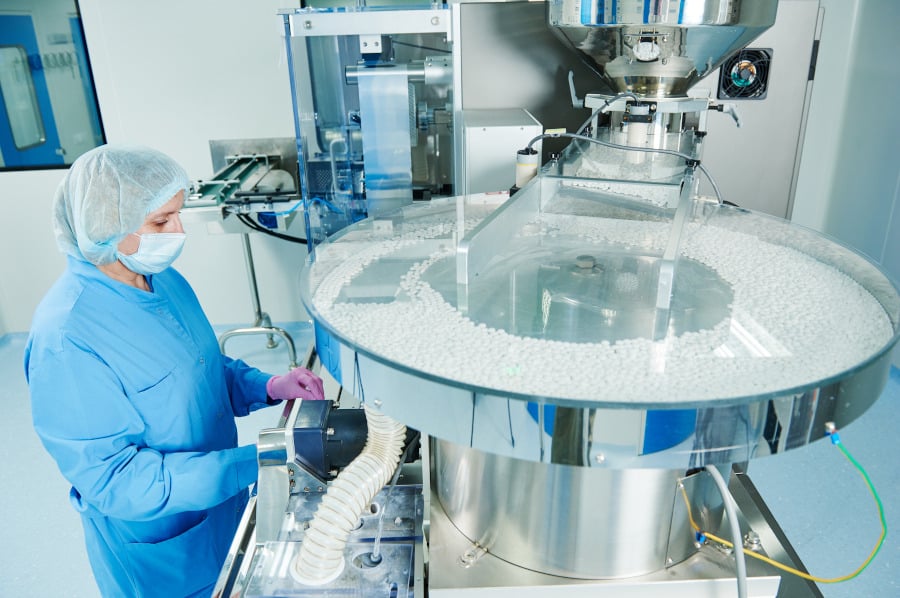Pharmaceutical and Medical Uses of Fluorocarbon Polymers
All materials used for production, processing, and device development must meet rigorous standards in healthcare. There’s no room for compromise in safety and performance, so engineers and manufacturers only use advanced materials like fluoropolymers. This article explores why fluoropolymers are a favorable option and how they’re used in the pharmaceutical and medical fields.
Why Are Fluoropolymers Relevant in Healthcare Applications?
These synthetic materials have strong carbon-fluorine bonds that contribute to their superior performance. They are also available in specified types, such as fluorinated ethylene propylene (FEP), polytetrafluoroethylene (PTFE), and polyvinylidene fluoride (PVDF).
Regardless of the type, these polymers possess physical and chemical properties that make them popular for pharmaceutical and medical use. Let’s go over the features that make fluoropolymers valuable in these fields:
Chemical Inertness and Biocompatibility
Fluoropolymers remain stable even when interacting with aggressive substances like strong acids, bases, and organic solvents. Their resistance is crucial in pharmaceutical processes like drug formulation, cleaning, and sterilization, where materials are continuously exposed to reactive chemicals. So, end products are less likely to experience contamination or material degradation.
Moreover, these polymers are non-reactive to biological or pharmaceutical compounds, preserving the purity and effectiveness of drugs. Living tissue can also tolerate them, making them essential for implants, catheters, and surgical instruments. They neither leak chemicals nor cause inflammation or other adverse immune responses, ensuring patient safety.
Resistance to Moisture and Adhesion
Preventing microbial growth and fouling is paramount in laboratories, drug production facilities, and other pharmaceutical and medical environments. Fluorocarbon-based polymers are ideal for such settings because of their hydrophobicity and low surface free energy, which create the material’s non-stick surface.
Their hydrophobic nature lets them repel all aqueous substances in contact with the surface. Similarly, their low surface free energy prevents all solids and liquids from latching onto the surface, whether powders, pastes, or biological materials. With these properties working together, fluoropolymers make cleaning and sterilization easier and reduce the risks of:
· Biofilm Formation
· Microbial Buildup
· Water-Based and Cross-Contamination
· Fouling
Low Coefficient of Friction
Fluorocarbon-based polymers have low friction that enables more precise and controlled movement and avoids tissue irritation when using devices like catheters, guide wires, syringes, and implants. It also prevents components in pharmaceutical processing systems from wearing down fast.
For example, parts like valves, seals, and plungers in pharmaceutical processing systems can remain reliable even in high-cycle or high-pressure conditions. Fluoropolymer’s low friction makes them less prone to material degradation, contamination, and equipment malfunction.
Thermal Stability and Sterilization Capacity
These polymers can tolerate extreme temperatures without breaking down, from cryogenic lows to heat exceeding 250C. Their strength and structural integrity aren’t compromised even during continual heating and cooling. Their thermal stability is paramount in pharmaceutical and medical device manufacturing since both involve autoclave or thermal sterilization processes.
Durability and Longevity
Pharmaceutical and medical device materials must withstand wear, mechanical stress, and environmental exposure in production. Because of their composition, fluorocarbon polymers can deliver the long-term durability needed in these sectors. They also have extended lifespans, minimizing replacement intervals and improving overall cost efficiency.
Dielectric Attributes
Fluorocarbon-based polymers have high dielectric strength, low dielectric constant, and low dissipation properties, contributing to the material’s excellent electrical insulation. They can withstand high electrical voltages and ensure accurate, high-speed, high-frequency signal transmission without interference.
Prevalent Applications in Healthcare
The pharmaceutical and medical sectors are strict on ensuring material integrity, performance, cleanliness, safety, and reliability, which fluoropolymers can achieve. Here are the diverse ways they’re used:
Prosthetics and Implantable Devices
Fluoropolymers are critical for manufacturing prosthetics and medical implants like vascular grafts, heart patches, and surgical meshes. Their biocompatibility is essential for avoiding tissue infections and health complications, while their enhanced longevity eliminates the need for frequent replacements.
Catheters and Guidewires
Product engineers and manufacturers often use fluorocarbon-based polymers, especially PTFE and FEP, to craft catheters and guide wires. Their biocompatibility, low friction, and non-stick properties facilitate smooth navigation through blood vessels, reducing the risks of tissue damage, infection, and other complications during medical procedures.
Surgical Equipment
Forceps, scalpels, clamps, and other surgical instruments are often treated with fluoropolymer-based coatings or liners. These polymers give the tools non-porous, easy-to-clean, and sterilizable surfaces. They also prevent biological materials from latching onto them, diminishing the chances of cross-contamination and infection.
Insulators
Fluoropolymers are typically used as insulators in imaging equipment and electrically powered, life-saving devices like defibrillators and pacemakers. Their dielectric properties enhance these devices’ diagnostic precision, while their durability improves the end products’ reliability and service life.
Tubing and Fluid Transfer Systems
Fluorocarbon-based polymers, especially FEPs, are frequently used to produce tubing systems that handle high-purity chemicals, pharmaceutical ingredients, and buffer solutions. Many manufacturers use PTFE and PVDF when creating pumps, seals, valves, gaskets, and pipes. These polymers can maintain the purity of these substances and withstand chemical attacks.
Filtration System Membranes
Keeping all products, equipment, systems, and environments sterile is mandatory in healthcare. PVDF and PTFE are two variants of fluorocarbon polymers commonly used in processing systems. They’re valued for filtration membranes since they don’t react to chemicals and prevent substances like drugs from attaching to proteins.
Enhance Medical Technology With the Right Polymer
Fluoropolymers are undoubtedly integral to the pharmaceutical and medical sectors, whether facilitating the production of life-saving medications or enhancing the reliability of implants. Their unique composition offers high-performance and industry-compliant healthcare solutions, making them valuable for engineers and manufacturers. Contact experts today to learn how these materials can benefit your project.

